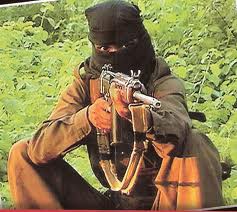
Kathmandu, April 21: A total of 6,574 ex-Unified Communist Party of Nepal (Maoist), the (UCPN-M)'s People's Liberation Army (PLA) combatants, have opted for voluntary retirement, a report said.
The step came at the end of the timeline specified for the second round of regrouping of the ex-Maoist combatants Thursday, Xinhua reported.
Founded in 1994, the Unified Communist Party of Nepal (Maoist), a Nepalese political party, was initially led by Pushpa Kamal Dahal a.k.a Prachanda. In Sep. 2008, Nanda Kishor Pun was appointed new chief commander of the PLA, as Prachanda became Nepal's Prime Minister.
The PLA, an armed wing, was founded in 2002, in the midst of the Nepal Civil War initiated by the Maoists in 1996.
According to Army integration special committee secretariat coordinator Balananda Sharma, only a total of 3,129 combatants now remain in the cantonments.
The combatants, opting for voluntary retirement, received their pay check and left the cantonments, said Sharma.
Following Comprehensive Peace Agreement, the PLA soldiers have been staying in cantoments.
The team of the secretariat is returning to Nepal's capital Kathmandu with the completion of the regrouping.
The second round of regrouping, conducted by the Army Integration Special Committee, has concluded all the seven divisions in Nepal that began April 14.





Comments
Add new comment